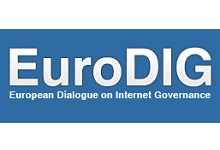What’s up in the Netherlands?: Showcase of Dutch best practices in the digital domain
19 Jun 2019 09:15h - 10:15h
Event report
[Read more session reports and live updates from the EuroDig 2019]
Starting off the discussion, Ms Marjoleijn Bonthuis (Platform for the Information Society (ECP)) and Mr Arie van Bellen (ECP) showed a video about the Netherlands and the importance of the digital domain in the country. It was emphasised that the Netherlands was the first country in Europe to be connected to a public Internet service and that Amsterdam hosts the world’s leading Internet exchange point today.
The showcase presented two examples of good practices where creating the public-private-partnerships (PPPs) between the government, business, and the civil society in the Netherlands has proven successful. The main point was including multiple stakeholders and seeing the process as an evolution – new stakeholders are always included. Van Bellen indicated three reasons behind the successful development of the Dutch digital society and economy: there has to be a clear set of rules about the processes, together with trust and openness; stakeholders need to be aware of both the established and emerging disruptive technologies; and, existing guidelines and rules need to be improved in ethical, political, legal, economical frameworks.
The first project presented was the Internet.nl tool that aims to improve the level of adoption of Internet standards by allowing users to check whether their website, e-mail, and Internet connection use modern and reliable Internet standards. Mr Gerben Klein Baltink (ECP) noted that the standards employed are the ones that already exist and whose implementation ensures connectivity, data protection, privacy, and trust without a middleman.
Ms Larissa Zegveld (Dutch Standardisation Forum) added that the open standards mentioned for Internet.nl also apply to public institutions and that the forum advises the Dutch government on such matters. The forum supports the government in the use of open standards for electronic information exchange with citizens by keeping a list of standards and monitoring how institutions comply. This policy of ‘comply-or-explain’ also decreases the chance of ‘vendor-locking’. Public institutions can easily change suppliers and vendors. ‘People sometimes ask why we do not advocate for legislation that allows to find non-compliant organisations’, Zegveld said. She explained that adding a bureaucratic layer has not proven efficient so far.
The second project was the Dutch Digital Infrastructure Association (DINL) that consists of data centres, Internet exchanges, domain name registrars, and a spectrum of companies that are the foundation of the Dutch Internet. The Netherlands is one of the biggest data hub in Europe. Ms Michiel Steltman (DINL) explained that while globally ‘the cloud’ is confined to the biggest technology companies, in the Netherlands it includes tens of thousands of companies that put their services and client and consumer data online. ‘We found that contrary to the belief that the Internet is a technical facility to deliver data, it is also an economic engine’, Steltman pointed out. The term used to describe this interconnectedness is the ‘third mainport’ as it is an important economic hub. In 2015, The Dutch Central Bureau of Statistics researched different layers of the Internet and concluded that the digital mainport’s economic value had already surpassed that of the airports and harbours in Europe. They found that the core Internet economy includes all companies who make profit via the Internet and this is a new way of looking at economic value. In the Netherlands the ‘third mainport’ is a bigger sector than the agriculture, finance or construction.
by Jana Misic
Related topics
Related event

